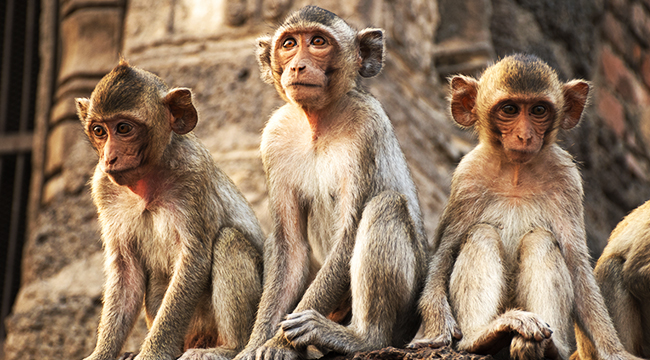
Cloning is usually the province of viral stories rather than scientific fact. After all, creating a genetically identical animal from scratch is a complicated process. And despite the achievement of Dolly the sheep, who was cloned in 1996, we haven’t seen much dramatic progress in cloning. Until now, anyway, as Chinese scientists have just announced they’ve cloned two monkeys using the same method that gave birth to Dolly. That’s the first time this has ever been achieved with primates. So what does this mean, and are humans next to be cloned?
Zhong Zhong and Hua Hua are long-tailed macaques born at the Chinese Academy of Sciences Institute of Neuroscience, and cloned from a “somatic” cell. That is, their genetic material was extracted from a cell like a skin cell or an organ cell, the cells you and I are made up of. You create the clone by removing the DNA from an unfertilized egg and injecting the DNA from the somatic cell. If the process works, and that’s a big “if,” you’ll have a perfectly genetically identical version.
In of itself, the process and its downfalls have been well-known for years. What’s a big deal here is that nobody was entirely sure the process would work for primates. Zhong Zhong and Hua Hua are rather dramatic proof that it can do just that.
To be fair, though, nobody is talking about cloning humans yet. The researchers did this because they want to engineer monkeys for better and more accurate scientific study. For example, they could all clone monkeys with the same cancers to study treatments. Even that, in the view of the team, is likely years from becoming possible, let alone common.
The big question lingering over this whole thing, though, is “what about humans?” Could we be cloned with just a skin cell? At the moment, no. It’s worth remembering this particular cloning technique has a massively high rate of failure; several other cloned macaques created by the same researchers only lived hours after birth.
Furthermore, these are newborns; while, so far, everything seems typical, things might fall apart quickly. And we should stop and consider it took more than twenty years to get this far after Dolly arrived in 1996. Applying this method to humans might simply be so complex as to be pointless, and is such an ethically and legally complex moral thicket even most philosophers would steer well clear.
Besides, scientists would rather clone new organs for transplant, which is not only ethically clear but much easier. Still, in a world where people are attempting head transplants, it’s fair to say that we’ve inched just that much closer to someone actually trying to clone a human. The question is what we’ll do if they ever succeed.
(via PhysOrg)
